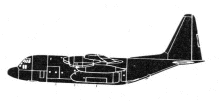Incident Overview

Description
CSA flight 511, an Ilyushin Il-18, crashed near Nrnberg, Germany, killing all 52 occupants. Flight OK511 was an international passenger flight from Prague (PRH), Czechoslovakia to Conakry (CKY), Guinea with en route stops at Zurich (ZRH), Switzerland, Rabat (RBA), Morocco, and Dakar (DKR), Senegal. It departed Prague at 19:41 and reached the cruising altitude of 6000 m at 19:53. At 20:09 the airplane disappeared off radar screens and was found to have crashed following an in-flight structural failure. On July 12, 1961 another CSA Il-18 operating on the same flight, OK-511, crashed near Casablanca killing all 72 on board. PROBABLE CAUSE: “In the light of the investigations under-taken, it is probable that the accident occurred in one of the following ways, although the possibility of other causes cannot be ruled out; a) Forced descent causing the aircraft to exceed the structural stress factor in the approach manoeuvre or during the pull-out owing to: 1) The aircraft falling into an uncontrollable flight position because of a defect in an artificial horizon or an electric instrument of equal importance. In air transport flight incidents throughout the world, where unintentional steep dives have occurred, such incidents can be explained by a defect in an artificial horizon. 2) An unnoticed overcontrol of the electrical rudder or aileron trim adjustment occurring when the automatic pilot was operating with flight movements resulting therefrom after the automatic pilot was disconnected. The automatic pilot was not equipped with a trim servo-indicator to give warning of excessive trim adjustment. 3) Physical incapacity of one or both pilots. b) Intentional descent owing to the presence of smoke, fire or similar emergency, during which the structural stress factor was exceeded in the approach manoeuvre or in the pull-out.”
Source of Information
https://www.airhistory.net/info/soviet.phphttps://www.airhistory.net/info/soviet.phpPrimary Cause
A defect in an artificial horizon, specifically a malfunctioning automatic horizon or electric instrument, caused the aircraft to experience an uncontrollable flight position, leading to a structural stress exceeding the aircraft’s limits.A defect in an artificial horizon, specifically a malfunctioning automatic horizon or electric instrument, caused the aircraft to experience an uncontrollable flight position, leading to a structural stress exceeding the aircraft’s limits.Share on:





